Try something new by growing these unusual vegetables. One of the most exciting things about growing your food is discovering weird and wonderful new vegetable varieties. Not only are the flavors something to savor, but some of these vegetables truly look bizarre.
What’s more, these unusual vegetables are surprisingly easy to grow. You won’t find any of these in the supermarket, and you’ll be lucky to see them at the farmer’s markets!
Yardlong Beans
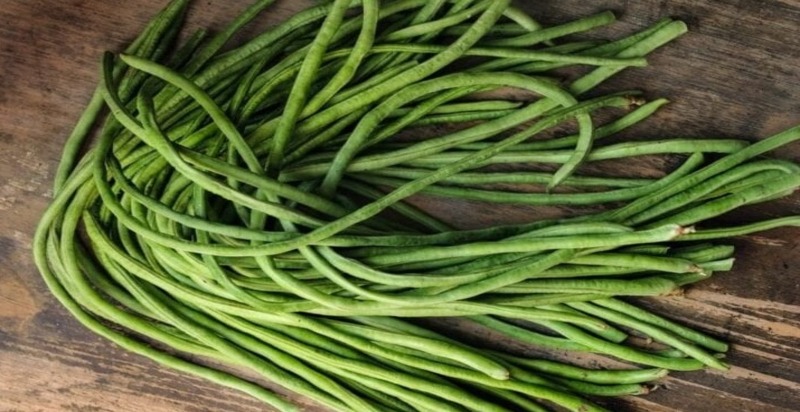
Yardlong beans are a fascinating vegetable often found in Asian cuisine. They can impressively grow up to two feet long! They are usually picked when they reach about 12 inches, at which point they’re perfect for eating like green beans. If you leave them to grow longer, you can use the dried seeds in soups.
Also known as snake beans or asparagus beans, these vegetables are quite versatile in the kitchen. They have a soft texture and a slightly sweet taste, making them a great addition to a variety of dishes, from salads to stir-fries. Yardlong beans are delicious and packed with nutrients, rich in vitamins A and C, protein, and fiber, which are great for your health. They are also quite hardy, resisting pests and diseases well, which is good news for gardeners. You can enjoy them raw for a crunchy, fresh snack or cook them to bring out their sweetness.
However, it’s important to consult with your doctor before adding yardlong beans to your health routine, particularly if you have health conditions that require a specific diet. Whether you’re a seasoned vegetable lover or just trying something new, yardlong beans are a delightful and healthy choice.
You can get the seeds of the yardlong beans here.
Karela

Bitter melon, known in some regions as bitter gourd, may not be a common sight in American, Canadian, or British gardens. Still, it’s a very popular vegetable commonly served in India. This intriguing plant has a unique appearance with a rugged, bumpy exterior and a distinct bitter flavor that many find appealing. The vegetable, typically green or yellow, is entirely edible, including the fruit, leaves, and tender shoots.
In culinary use, bitter melon is quite versatile. It can be pickled to soften its bitterness or used as a stuffing ingredient, offering a taste experience similar to a cucumber but with a unique twist. It thrives in warm, sunny conditions, akin to cucumbers, making it an interesting addition for gardeners in these regions looking to diversify their gardens.
As a robust vine, bitter melon can grow up to 15 feet long, requiring space and support. It’s not just its culinary appeal that makes it noteworthy; bitter melon is also recognized for potential health benefits, such as aiding blood sugar regulation and supporting the immune system. This makes it a valuable plant for both its unique flavor and health aspects in gardens and kitchens, especially in areas where it can be successfully grown.
For those interested in growing bitter melon, it’s important to provide sturdy support for its vine-like growth and ensure regular watering.
Jicama
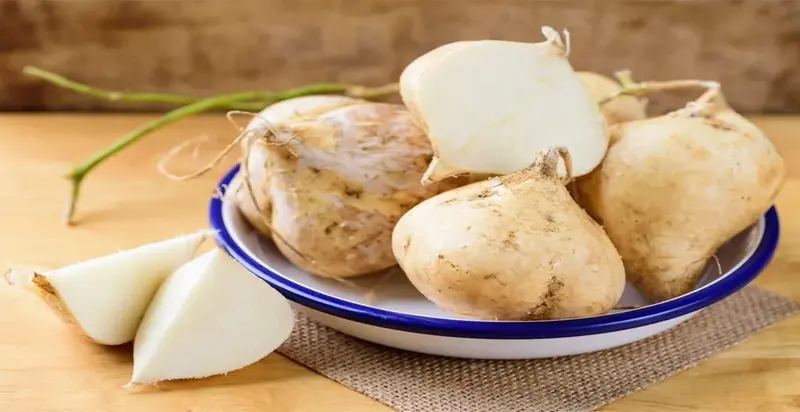
Jicama is a standout in the garden, ideal for bringing a fresh crunch to salads, enriching sauces, or serving as a unique garnish. This fruit is wonderfully crisp when eaten raw and transforms into a soft, potato-like texture when cooked or fried. Its long vines, capable of growing up to 15 feet, are not only impressive but also productive, yielding delicious tubers all season long.
This vegetable is quite the curiosity, resembling sweet potatoes in growth but producing smaller tubers. Its culinary versatility is matched by its nutritional value. Jicama is low in calories yet rich in dietary fiber, vitamin C, and potassium, making it a favored choice for those mindful of their diet. Its ability to store well allows for enjoying the harvest year-round, providing a steady source of these nutrients.
Growing jicama can be a rewarding endeavor. The plant’s vigorous vines and abundant production result in a bountiful harvest from just a single planting. Its distinctive flavor and texture enhance a variety of dishes, earning it a cherished spot in kitchens around the world. However, if you’re considering adding jicama to your diet for health reasons, consulting with a healthcare professional is advisable, especially for those with specific dietary needs.
Garlic Scapes
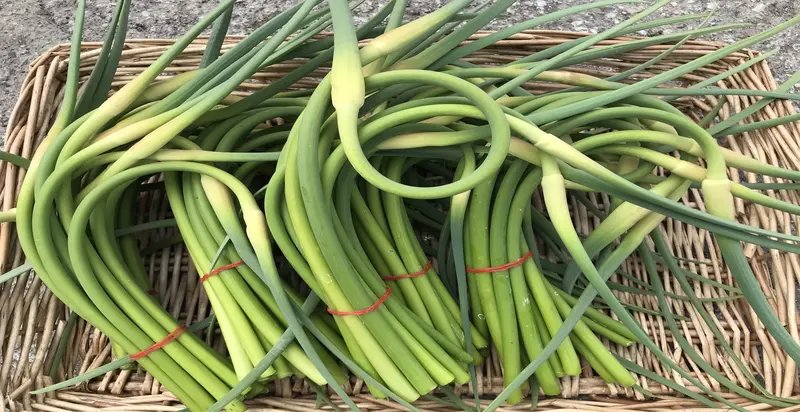
Garlic is more than just a kitchen staple; it’s a versatile plant that offers more than just cloves for the avid gardener. In many Asian cultures, the entire garlic plant is used, particularly the scapes or young shoots. These scapes have a gentle garlic taste and are perfect when eaten raw in salads or tossed into soups just before serving.
Growing garlic requires patience, as it needs about six months of growing time. For the best results and largest cloves, it’s a good idea to plant garlic around the summer or winter solstice. There are specific varieties suited for either summer or winter, so it’s important to choose the right type for your planting season.
Beyond the well-known cloves, garlic flowers, or garlic blossoms, are another part of the plant that shouldn’t be overlooked. These edible flowers bring a concentrated burst of garlic flavor to any dish. They’re often used as a garnish or a special ingredient in gourmet meals. The bulbs, divided into cloves, are the most commonly used part of garlic. They’re famous for their strong taste and health benefits, such as antibacterial and antiviral properties. Including garlic in your garden not only adds flavor to your cooking but also brings a range of uses and health benefits.
Remember, while garlic is known for its health benefits, it’s wise to consult with a healthcare professional before using it as part of a health routine, especially if you have specific dietary needs or health conditions.
Romanesco Broccoli
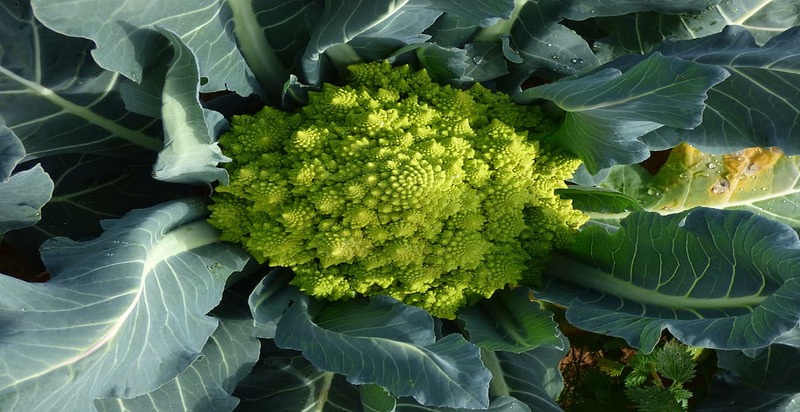
Romanesco broccoli is an eye-catching vegetable famous for its vibrant green, spiral florets, and unique fractal pattern. This Italian-origin vegetable stands out from regular broccoli and cauliflower with its crunchier texture and slightly nuttier flavor.
Growing Romanesco is akin to cultivating cauliflower or broccoli, favoring cool weather and nutrient-rich soil. It’s an excellent addition to any garden, offering both visual appeal and a tasty, nutritious harvest. In the kitchen, Romanesco’s versatility shines. It can be steamed, roasted, or added raw to salads, enhancing dishes with its distinct taste and striking appearance.
Packed with vitamin C, fiber, and antioxidants, Romanesco is a healthy choice. However, always consult a healthcare professional before using it for specific health benefits, particularly if you have dietary restrictions.
If you are a beginner and need more tips and ideas to grow your vegetable garden, check out 27 Tips for Beginner Vegetable Gardeners.
Black Radish

Black radishes are a gardener’s delight, known for their ease of growth and minimal care requirements. Just scatter the seeds in your garden, and they’ll practically take care of themselves until it’s time to harvest. These radishes, with their unique black skin, offer a flavor that’s milder than the common red radish but still packs a noticeable punch.
Black radishes are a simple way to add a fresh, slightly spicy taste to your meals in the kitchen. They’re particularly good when sliced or grated into garden salads, where their crisp texture can really shine. Although they’re less spicy than red radishes, they still add a pleasant kick to any dish.
Don’t forget about the leaves – while a bit tough, they are entirely edible. Cooking them, perhaps in stir-fries or soups, softens them up and makes for a nutritious and flavorful addition, ensuring you use every part of the plant.
Remember, while black radishes are a healthy choice, it’s important to consult with a healthcare professional before incorporating them into your diet, especially if you have specific health conditions.
Okinawan Purple Sweet Potato
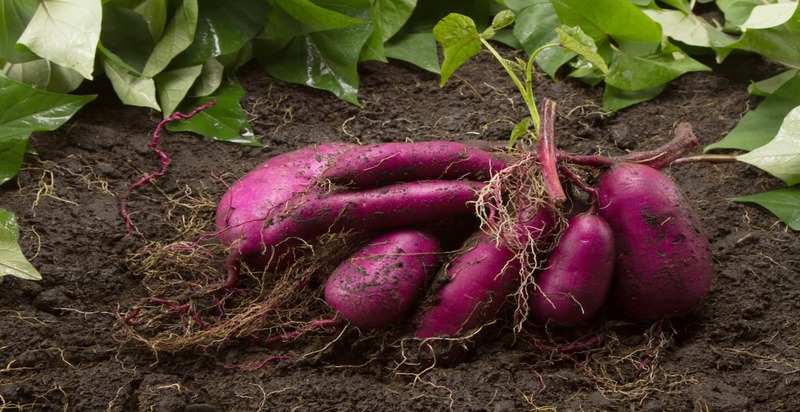
Okinawan Purple Sweet Potatoes, with their vibrant purple flesh, are not only a visual delight but also a nutritious addition to any meal. Originating from Okinawa, Japan, these sweet potatoes are known for their unique color and rich, sweet flavor that’s slightly different from the orange varieties commonly found in Western countries.
These sweet potatoes are as easy to grow as their orange counterparts. They thrive in well-drained soil and prefer a sunny spot in the garden. The key to their successful growth is warm soil, making them ideal for summer planting in many regions. When it comes to harvesting, the vibrant purple tubers are a pleasant surprise beneath the soil, ready to bring color to your plate.
In the kitchen, Okinawan Purple Sweet Potatoes are incredibly versatile. They can be baked, mashed, or used in desserts, offering a naturally sweet taste. Their rich purple hue, due to the presence of anthocyanins, not only makes them appealing but also indicates a high level of antioxidants. This makes them a healthy choice, known for benefits like heart health and improved digestion.
As always, while Okinawan Purple Sweet Potatoes are a healthy food choice, it’s advisable to consult with a healthcare professional before using them for specific health benefits, especially if you have dietary restrictions. The taste is similar to that of the common yam, If you grow yams already then consider switching to this yummy powerhouse of goodness instead.
Fiddleheads
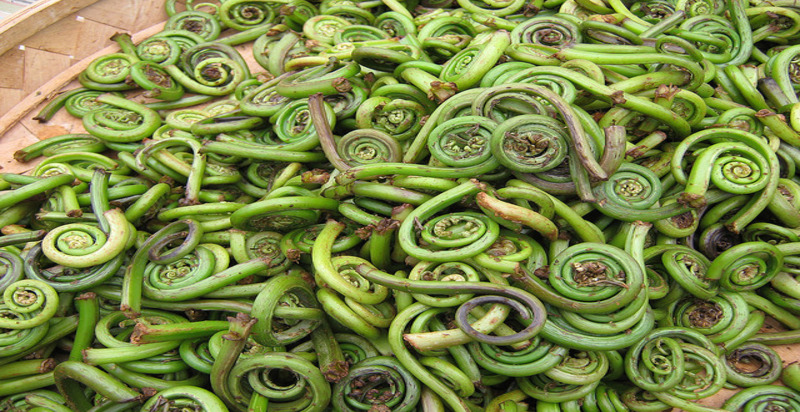
Fiddleheads, the young shoots of certain fern species, are a unique addition to both the garden and the kitchen. While they’re technically ferns, not vegetables, their asparagus-like flavor makes them a popular choice for spring dishes. These plants are very easy to grow mostly ornamental, moist areas and are quite easy to grow, especially varieties like the Ostrich Fern, which is known for being both edible and easy to cultivate.
When cooking fiddleheads, it’s important to cook them thoroughly to remove shikimic acid, a harmful compound present in some ferns. These delightful greens are not only tasty but also packed with nutrients like antioxidants and omega-3 fatty acids. Their short spring harvest season makes them a special seasonal treat.
Remember, if you’re considering adding fiddleheads to your diet, it’s wise to consult with a healthcare professional, especially if you have specific health conditions or dietary needs.
Ramps

Ramps, also known as wild leeks, are a distinguished member of the Allium (onion) family, highly valued for their exceptional flavor. These plants offer culinary versatility with their tender leaves in the spring and sweet bulbs in the winter. Their dual-season harvest makes them a favorite in both raw and cooked dishes.
Cultivating ramps is straightforward, making them a great choice for gardeners. They thrive in shaded areas, a trait that allows them to grow where other vegetables might not. Once planted, ramps are low maintenance, reappearing annually in the same spot with minimal care. This perennial nature ensures a consistent and hassle-free yield year after year.
In the kitchen, ramps are a chef’s delight, known for adding a unique, onion-like flavor to a variety of recipes. From enhancing salads with their mild taste to elevating cooked meals, ramps are a versatile ingredient. However, if you’re considering incorporating ramps into your diet for their health benefits, consulting with a healthcare professional is recommended, especially for those with specific dietary needs.
Once planted, it will continue to clump in one area year after year, making it a truly low-maintenance crop.
Kohlrabi
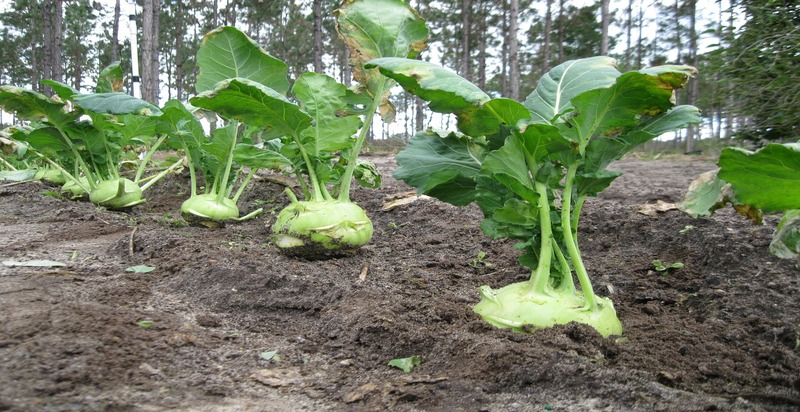
Kohlrabi, a unique member of the Brassica family, which includes broccoli and cauliflower, is notable for its swollen stem that combines tenderness and flavor. This vegetable is not just about its unusual shape; its young leaves are edible too, similar to kale, adding to its versatility. The stem, best harvested when it’s about the size of a tennis ball, offers a mild, cabbage-like flavor that many find appealing.
Growing kohlrabi is as straightforward as cultivating its relatives like broccoli or cabbage. It flourishes in well-drained soil and enjoys plenty of sunlight. This makes it a suitable and adaptable choice for various garden settings. Whether you’re an experienced gardener or just starting, Kohlrabi is a rewarding plant to grow. Nutritionally, kohlrabi is a powerhouse, rich in vitamins and minerals. It’s a great way to add both nutrition and variety to your meals. You can enjoy it raw, perhaps in salads for a crunchy addition, or cook it through roasting or stir-frying, which brings out its subtle flavors. Another advantage of kohlrabi is its quick growth cycle, allowing for multiple harvests in a single season and making it a productive choice for those looking to maximize their garden’s yield.
As with any dietary addition, if you’re considering incorporating kohlrabi into your meals for its health benefits, consulting with a healthcare professional is recommended, especially for those with specific health conditions or dietary needs.
Salsify
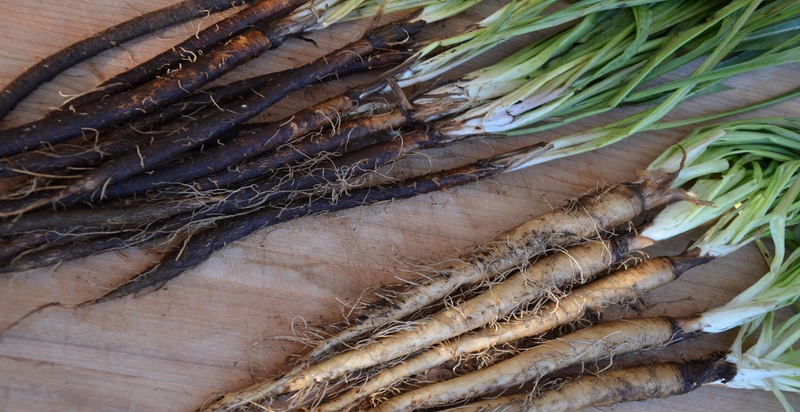
Salsify is an intriguing and multifaceted vegetable, often overlooked yet offering a range of benefits for both the garden and the kitchen. This plant is known for its ornamental flowers, edible root, and herbal properties, and it might even be found growing wild in your backyard. The root and young shoots of salsify are particularly notable for their unique flavor, often compared to oysters.
In culinary use, the young flower shoots of salsify are as versatile as they are delicious. They can be enjoyed raw or cooked, similar to asparagus, adding a unique taste and texture to various dishes. The flowers themselves are not only beautiful but also edible, making a delightful addition to salads. This unusual tasting vegetable is certainly worth growing for those who enjoy exploring diverse flavors in their cooking. Beyond its culinary appeal, salsify is beneficial for garden health. Its deep roots naturally aerate the soil, breaking up compaction, which enhances soil structure and water absorption. The flowers of salsify are also attractive to beneficial insects, contributing to a balanced and healthy garden ecosystem. By planting salsify, gardeners not only gain a unique ingredient for their recipes but also support soil health and biodiversity in their gardens.
As always, when introducing new vegetables like salsify to your diet, it’s advisable to consult with a healthcare professional, especially if you have specific health conditions or dietary needs.
Sunchoke
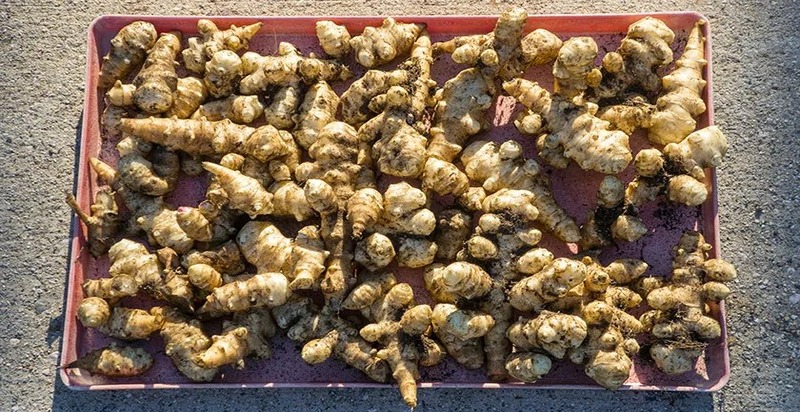
It is a very easy-to-grow vegetable that will reward you with beautiful flowers and tasty tubers. It grows very quickly and needs almost no care to produce a crop.
Sunchokes, also known as Jerusalem artichokes, are a delight for any gardener, offering the dual benefits of beautiful flowers and tasty tubers with minimal care requirements. Thriving in full sun, these plants can grow up to 9 feet tall and are not picky about soil, making them an easy addition to any garden space. However, gardeners should plant with care, as their tubers can persist and spread easily, potentially becoming invasive. Sunchokes are not only an aesthetic choice but also a healthful one, with their tubers acting as a natural source of inulin, beneficial for blood sugar regulation, particularly for those with diabetes. When planning your garden, consider companion planting sunchokes with leafy greens like lettuce and spinach, which benefit from the shade sunchokes provide. This approach maximizes garden space and promotes biodiversity. Whether you’re a seasoned gardener or new to the hobby, sunchokes offer a rewarding experience with their ease of care, health benefits, and contribution to garden beauty and productivity.
If you want to plant vegetable side by side to save space, this article is helpful, What Vegetables to Plant Side by Side / Companion Planting and Gardening.
Tomatillo
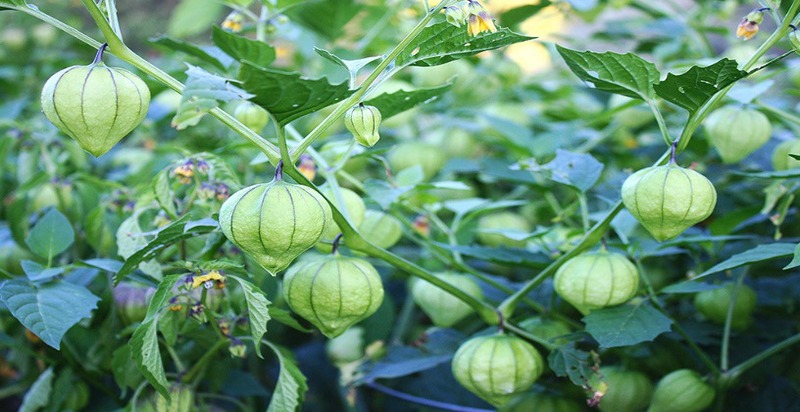
Tomatillos, part of the equal own family as tomatoes, thrive in comparable developing conditions and are a unique addition to any garden. These small, inexperienced end results are not the simplest key in making salsa verde but additionally add a tangy flavor to plenty of dishes. They may be eaten uncooked or cooked, with roasting or frying bringing out their great taste, best for soups, stews, and sauces.
In the garden, tomatillos want a pal for pass-pollination, so it is an amazing concept to plant as a minimum. This ensures an excellent yield of fruit. When it is time to harvest, you’ve got a desire: pick them green for a more sour flavor, or wait until they’re ripe for a sweeter flavor. Dried tomatillos are also delectable, comparable to cranberries with a tomato twist, and they are fantastic for thickening jams or jellies because of their high pectin content.
Nutrition-smart, tomatillos are a healthful preference, rich in fiber, nutrients C and K, and antioxidants. They’re a tremendous addition for every person trying to diversify their diet with precise flavors and fitness benefits. Whether you are into gardening or cooking, tomatillos are really worth trying out.
White Asparagus
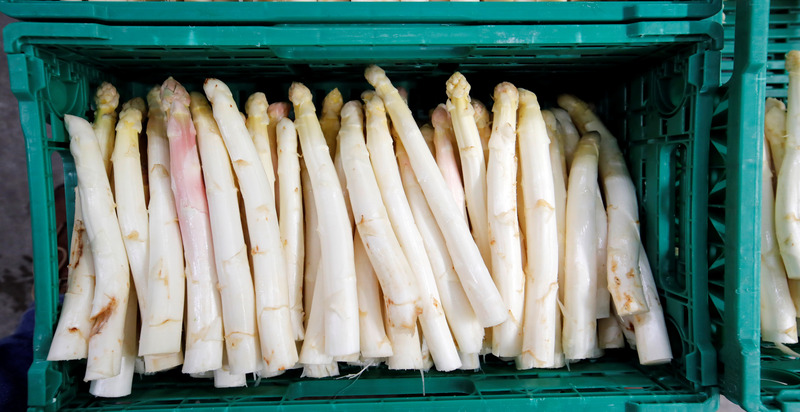
Blanching asparagus to produce white stems isn’t always approximately the usage of a unique range, however alternatively a completely unique developing method. Almost any variety of asparagus can be transformed from inexperienced to white through this approach. The key is to mound soil across the emerging shoots or use opaque covers to block out the sunlight. This prevents photosynthesis, changing the spears’ shade to a creamy white. But it is no longer just about the color – this method also makes the asparagus extra tender and subtly alters its flavor, giving it a more delicate taste as compared to its green counterpart.
This isn’t a special variety but actually a special growing technique. Almost any asparagus variety can be blanched to produce white stems instead of green. To get white asparagus all you need to do is mound the soil up around the shoots until they are ready to pick. Blanching asparagus to produce white stems is a simple yet effective gardening technique that involves mounding soil around the shoots or using opaque covers to block sunlight, preventing photosynthesis. This not only alters the color to a desirable creamy white but also enhances the flavor and texture, making it more delicate than green asparagus. This method, which can be applied to almost any asparagus variety, adds a gourmet touch to the garden produce. With asparagus being a perennial that can yield harvests for over 20 years, adopting this technique can provide a long-term supply of this delicacy, enriching your culinary experiences with minimal additional effort.
Asparagus is best harvested after the second year of being planted and will continue to produce spears for 20 or more years in the same spot!
Oca
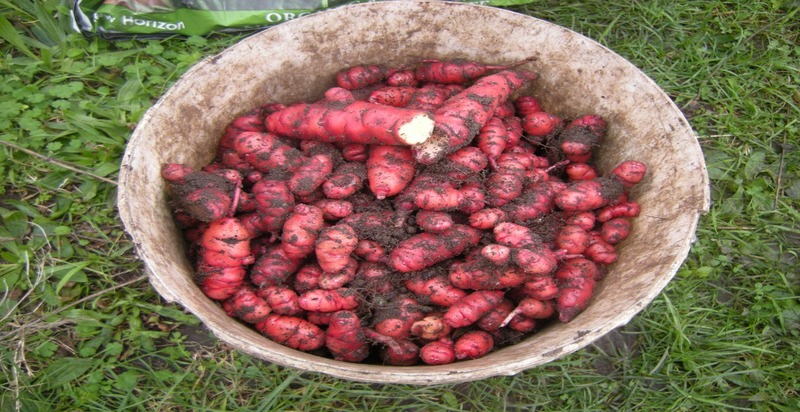
Oca, originally a traditional food of Native Americans, has made a seamless transition to gardens across the states. It’s appreciated for its ease of cultivation and the production of small tubers that bear a resemblance in taste to potatoes. After gaining commercial recognition in New Zealand, Oca now offers an exciting range of varieties and colors, enriching culinary experiences. The presence of oxalic acid in some tubers may impart a bitter flavor, but this can be easily managed by removing the skins and cooking them thoroughly, bringing out their more enjoyable flavors.
One of the intriguing aspects of Oca is its diverse taste. When eaten raw, it has a tangy quality, but cooking transforms its flavor significantly, differing across various types. This variety in taste makes it a fun experience to plant different types and discover your preferred flavor, whether used in adding a fresh twist to salads or as a hearty addition to stews. Oca’s culinary flexibility and friendliness make it an exciting choice for both gardening enthusiasts and those who love to experiment in the kitchen.
Moreover, Oca is not just a treat for the taste buds but also offers nutritional benefits. Rich in carbohydrates, vitamin C, and essential minerals, it serves as a healthy inclusion in various diets. Its ease of cultivation makes it a perfect choice for gardening enthusiasts, while its culinary flexibility appeals to those who love experimenting in the kitchen. The combination of health benefits, gardening simplicity, and culinary adaptability make Oca an attractive option for a diverse range of people, from home gardeners to culinary explorers.
Celeriac
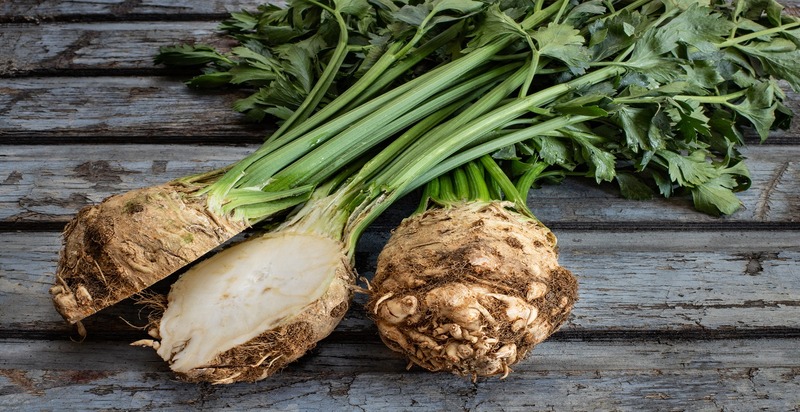
One of the only vegetables mentioned in Homer’s Odyssey, celeriac, was once a commonly used vegetable. Growing wild over much of Europe and the Americas, it is very easy to grow, requiring minimal water and nutrients to produce a crop. Making it a low-maintenance crop for both amateur and experienced gardeners. Its resilience and ease of growth contribute to its appeal among those who value sustainable and straightforward gardening practices.
Celeriac is best harvested when the swollen root is between 4 and 5.5 inches. However, some cultures prize the strong flavor and tenderness of the immature plant. Celeriac is edible, raw, or cooked and tastes similar to celery. Celeriac plants are highly prized. This variation in harvesting practices highlights the flexibility and diverse uses of celeriac in different culinary contexts. Celeriac’s adaptability extends to its preparation as well; it can be enjoyed both raw and cooked. When eaten, it exudes a flavor reminiscent of celery, offering a subtle yet distinct taste profile that can enhance a variety of dishes.
It has nutritional advantages as well as culinary usage. Vitamin K, vitamin C, and phosphorous are among the many vitamins and minerals it contains. It is also a significant source of dietary fiber. It is a tasty and nutritious addition to meals due to its nutritional profile. A valuable addition to any garden or kitchen, celeriac offers a unique combination of historical significance, simplicity of growing, culinary adaptability, and nutritional value. It can be served raw or added to soups, stews, or other dishes.
Wan Shen
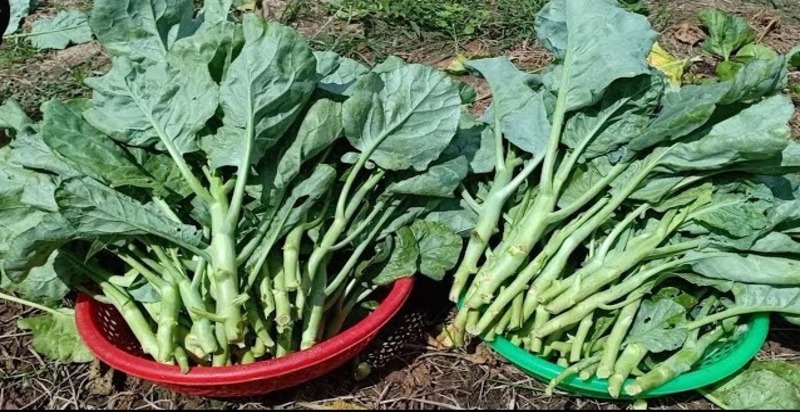
It is known by Chinese broccoli that Wan Shen is a delicious green vegetable that has won over the hearts of both foodies and gardeners. It stands out as an ingredient in a variety of meals due to its distinct flavor, which is described as a sweet and peppery combination reminiscent of broccoli. Its flavor profile, especially its inherent sweetness balanced by a sharp broccoli-like tang–has made it a favorite in Chinese cooking. It is most frequently served in Chinese restaurants as part of a stir-fried dish with garlic and soy sauce, which brings out its unique flavor. This is one of my favorite greens to grow. Wan Shen is delicious and has a sweet and spicy broccoli flavor, which I love planting.
Cultivating Wan Shen is a fun and gratifying activity for gardeners of all abilities. It grows equally well in containers and in-ground gardens, making it an adaptable choice for individuals with limited space who like traditional garden beds. One of the primary benefits of growing Wan Shen is its flexibility to a variety of growing circumstances, although it grows most during the winter months. This fondness for milder weather makes it a good choice for gardeners like me who want to extend their growth season and have fresh greens accessible all year. Its comparatively simple care and maintenance requirements boost to its appeal among home gardeners.
Wan Shen, aside from its culinary usage, has nutritional benefits due to its high vitamin and mineral content. It is especially abundant in Vitamin C, Vitamin K, and Dietary fiber, making it a nutritious complement to any diet. It’s crunchy texture and powerful flavor make it ideal for a range of cooking methods other than stir-frying, such as steaming, boiling, or incorporating into soups and salads. Wan Shen is a fantastic choice for individuals wishing to experiment with Asian cuisine or add a nutritious and savory green to their meals, thanks to its delightful taste and ease of growth.
Growing well in containers or in the ground, Wan Shen also known as Chinese Broccoli is great for every gardener. Best grown through the winter months.
Nopal
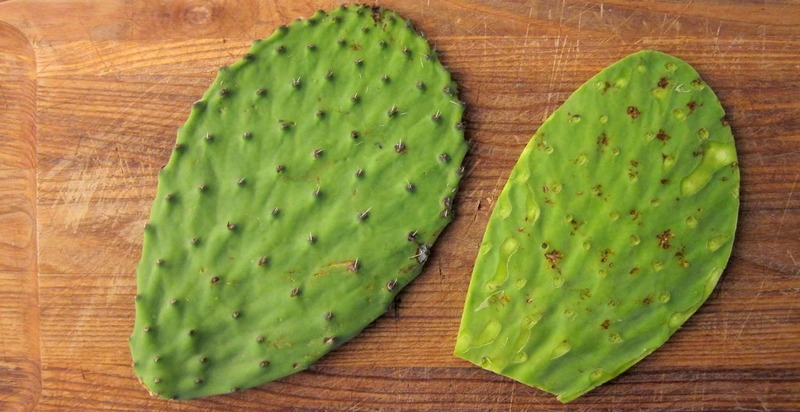
Prickly pear, a popular garden plant, is not only visually appealing but also produces tasty and healthy fruits and vegetables. The prickly pear cactus fruits, which are about the size of a golf ball, are famed for their juicy deliciousness. These vivid fruits, which are often deep crimson or purple, maybe a delicious complement to a variety of recipes, from fresh salads to sweet sweets, adding a unique flavor and a pop of color. However, not only is the fruit valuable; the plant’s leaves, or “pads,” are also a gastronomic gem. These leaves, often known as Mexican spinach, are an essential component of many Mexican cuisines. Gardeners frequently pick these leaves by carefully removing the thorns and then slicing or dicing them for use in different recipes.
Nopal leaves, which are part of the prickly pear plant, have a mild, somewhat tangy flavor similar to green beans, as well as a crisp texture. They are at their most tasty in the spring, so now is the optimum time to harvest. The leaves can be prepared in a variety of ways, including grilling, sautéing, and boiling, to soften their texture and accentuate their naturally mild flavor. Nopal leaves are not only a useful kitchen item but they are also known for their health advantages. They’re low in calories but abundant in fiber, antioxidants, and a variety of essential nutrients. This nutritional composition makes them an excellent alternative for anyone wishing to incorporate more plant-based components into their diet.
Nopal leaves’ popularity is boosted by their ease of preservation. They can be preserved or stored, so their distinct flavor and health advantages can be enjoyed year-round. Because of their adaptability in preservation, they can be used in meals far after their growing season has ended. Prickly pear plants are valued for their hardiness and simplicity of cultivation, in addition to their culinary use. They may grow in a range of climates with little maintenance, making them excellent for both experienced and novice gardeners. Prickly pear cactus provides a unique and enjoyable gardening and culinary experience, whether for their delicious fruits, healthy foliage or simply their eye-catching appearance.
Cassava
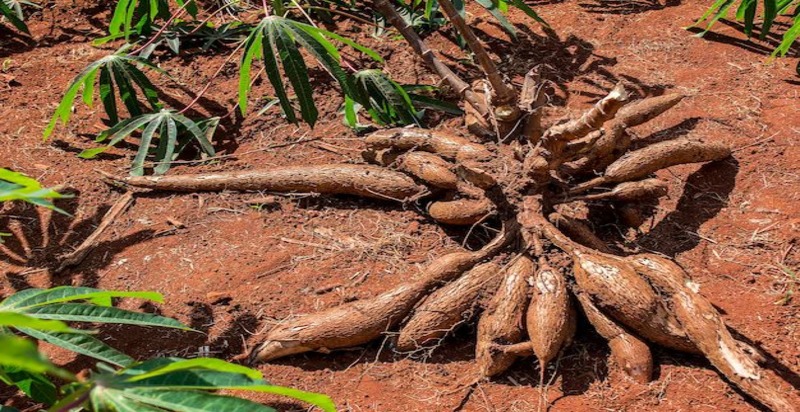
Cassava, also known as yuca in the United States, is a hardy woody shrub that grows easily and is prized for its starchy, tasty tubers. It thrives in warm, tropical areas and can withstand drought and depleted soils, making it a popular crop in difficult conditions. The plant’s roots are not just a staple food, but when dried and powdered, they convert into tapioca, a versatile starch used in everything from puddings to gluten-free baking.
Cassava processing requires meticulous care. The roots contain substances that, if left untreated, can be hazardous. Soaking, fermenting, and boiling methods are employed to decrease these antinutrients and make cassava safe to eat. Commercial varieties have been engineered to produce sweeter, more edible roots, lowering the risk of antinutrients. Regardless, cassava prefers the continuous temperature of tropical regions and is therefore inappropriate for cold climes.
Cassava’s utility extends beyond its culinary use. It is an important part of many diets around the world because it contains tapioca and traditional goods. Cassava’s ease of growing and the nutritional content of its roots make it a valuable and versatile crop in tropical agriculture.
Dragon carrot
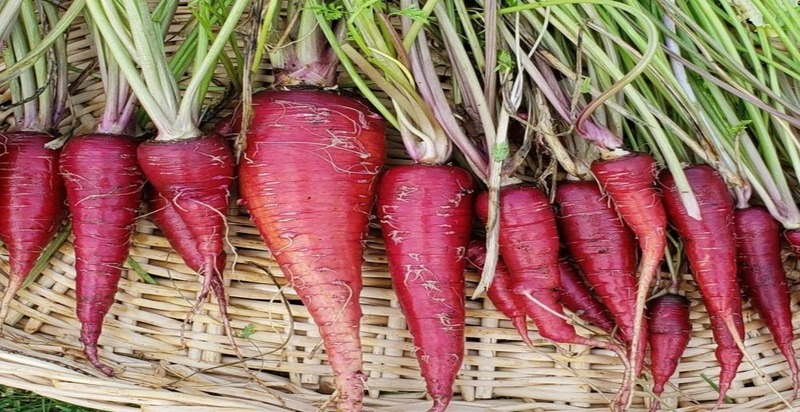
Carrots’ interesting history portrays a journey of transition and rediscovery. Carrots are thought to have been dark purple in the beginning rather than the orange we see today. This changed centuries ago, according to a story about Dutch farmers and a royal decree. According to legend, farmers carefully selected carrots to produce the orange variety in honor of the Dutch Queen, who preferred the color orange to signify the royal family’s House of Orange. Over time, selective breeding resulted in the orange carrot gaining supremacy over its purple prior.
From the past to now, we’re seeing a comeback of the original purple carrot, with the Dragon carrot leading the way. The Dragon carrot is notable not just for its beautiful deep purple skin but also for its outstanding nutritional worth. It has nearly double the health benefits of a typical orange carrot due to its high antioxidant and nutritional content. These purple varieties contain anthocyanins, the same substances that give blueberries and red grapes their health benefits.
More than just a nutritional powerhouse, the Dragon carrot is highly regarded for its rich, robust flavor. This makes it popular among culinary lovers who want to improve the taste and visual attractiveness of their dishes. Dragon carrots offer color to salads, depth to stews, and bright touch to roasted vegetable dishes. This rise in the popularity of purple carrots, led by the Dragon carrot, indicates a growing appreciation for variety in our meals, both in terms of flavor and nutritional content, reuniting us with a lost agricultural history.
Malabar Spinach
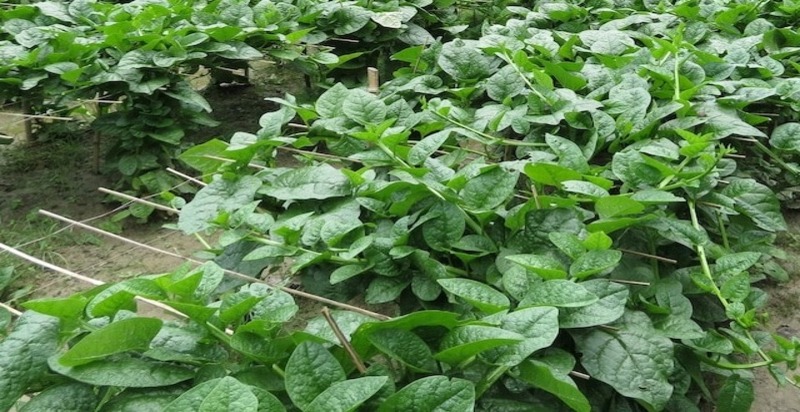
Malabar spinach, a climbing type with thick, glossy leaves, is a unique addition to any garden. Its capacity to grow vertically saves space, and both its young stems and leaves are edible, uncooked or cooked. Unlike conventional spinach, Malabar spinach does not go to seed in warm weather, ensuring a consistent, tasty crop throughout the season. Its thickening characteristics make it very useful in soups and sauces.
Malabar spinach flourishes in the summer months and needs plenty of water and nutrient-rich soil. Gardeners value its consistent yield and resilience to summer heat, which make it a reliable source of fresh greens. However, keep in mind that this plant is frost-sensitive and will die back with the first cold snap. Despite this, its distinct growth pattern and culinary adaptability make it a satisfying choice for both gardeners and cooks, providing a nutritious and flavourful alternative to standard spinach kinds.
Malabar spinach, which is high in vitamins A and C, iron, and calcium, provides great nutritional value and is easy to grow. Its peppery flavor provides a unique twist to a variety of foods, from crunchy salads to delicious stir-fries and smoothies. This robust, heat-resistant plant is both a gardener’s delight and a healthy addition to any diet, making it a standout in both the culinary and gardening realms.
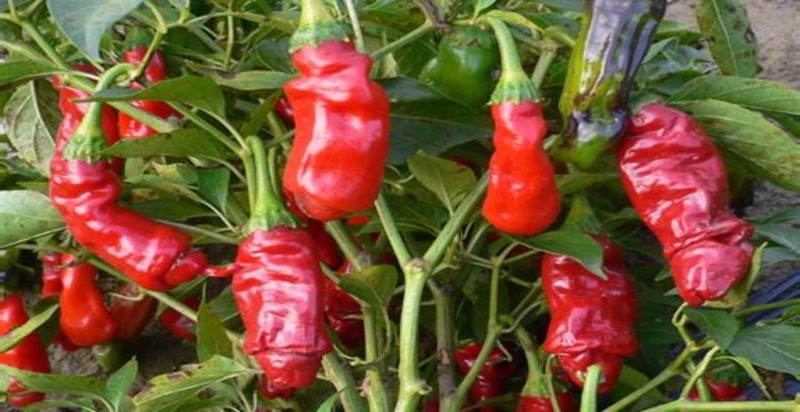
The Peter Pepper is a unique and interesting addition to any vegetable garden, known not just for its peculiar shape but also for its gastronomic properties. It is similar in intensity to jalapeno and has a nice mix of spiciness and flavor, making it a useful component for everyday cooking. The Peter Pepper adds both flavour and fun to the kitchen, whether it’s spicing up salsas, kicking sauces, or simply serving as a conversation starter garnish. Its distinct appearance and flavor profile have earned it a following among gardeners and cooks alike.
Peter peppers require growth conditions similar to those of other pepper cultivars. They normally grow to be around 3-4 inches long and prefer well-drained, nutritious soil. Regular watering is required for their growth, but with a change: to boost their heat, water them less regularly. This stress-inducing approach helps the plant to create more capsaicin, the chemical responsible for the pepper’s heat. Watering the plants only when they begin to wilt allows you to successfully increase their heat level and tailor the spiciness to your liking.
The Peter Pepper is an ideal example for people looking for more innovative and space-saving gardening solutions, particularly in compact places such as apartments. Many other veggies and fruits are ideal for small spaces, providing fresh harvest directly from your balcony or ledge. Read articles like “Vegetables and Fruits You can Grow in Your Apartment” to learn about a variety of plants appropriate for apartment gardening. Such tools can provide vital insights on making the most of your growing space, allowing you to enjoy a range of fresh, organic vegetables even in small places.
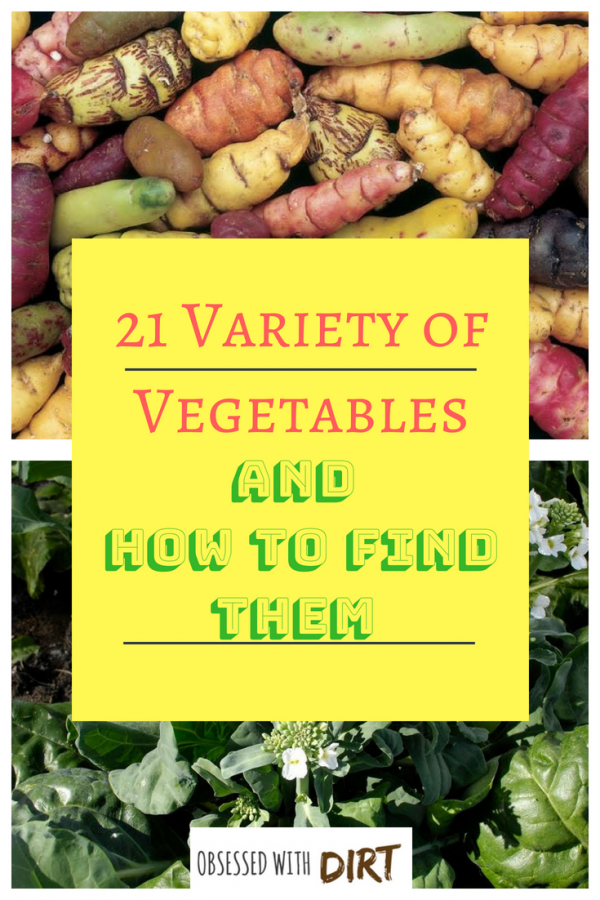
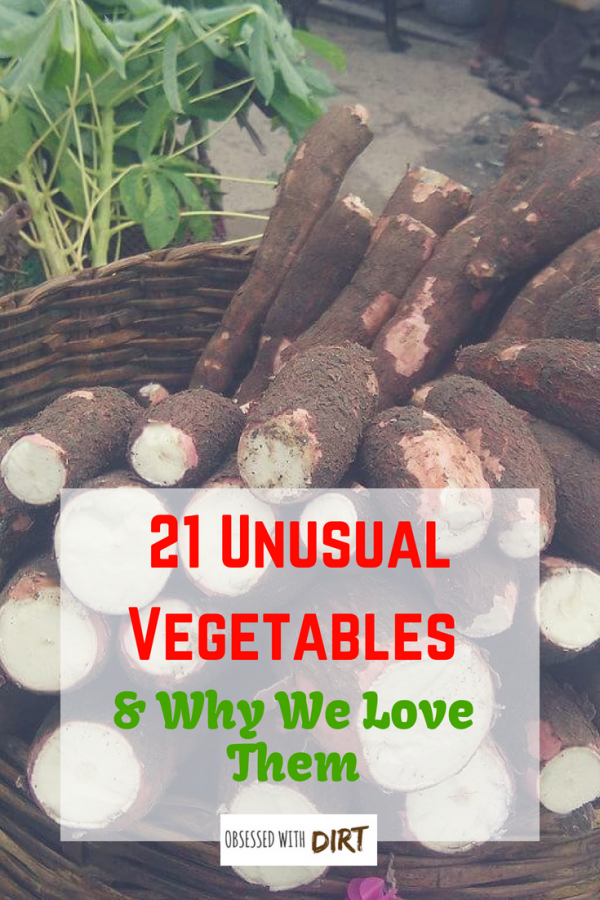

- Fuerte Avocado: History, Flavor, Calories, Benefits, And Uses - March 27, 2024
- Everything You Wanted to Know About Barhi Dates - March 23, 2024
- Everything You Wanted To Know About Beech Mushrooms - March 23, 2024
